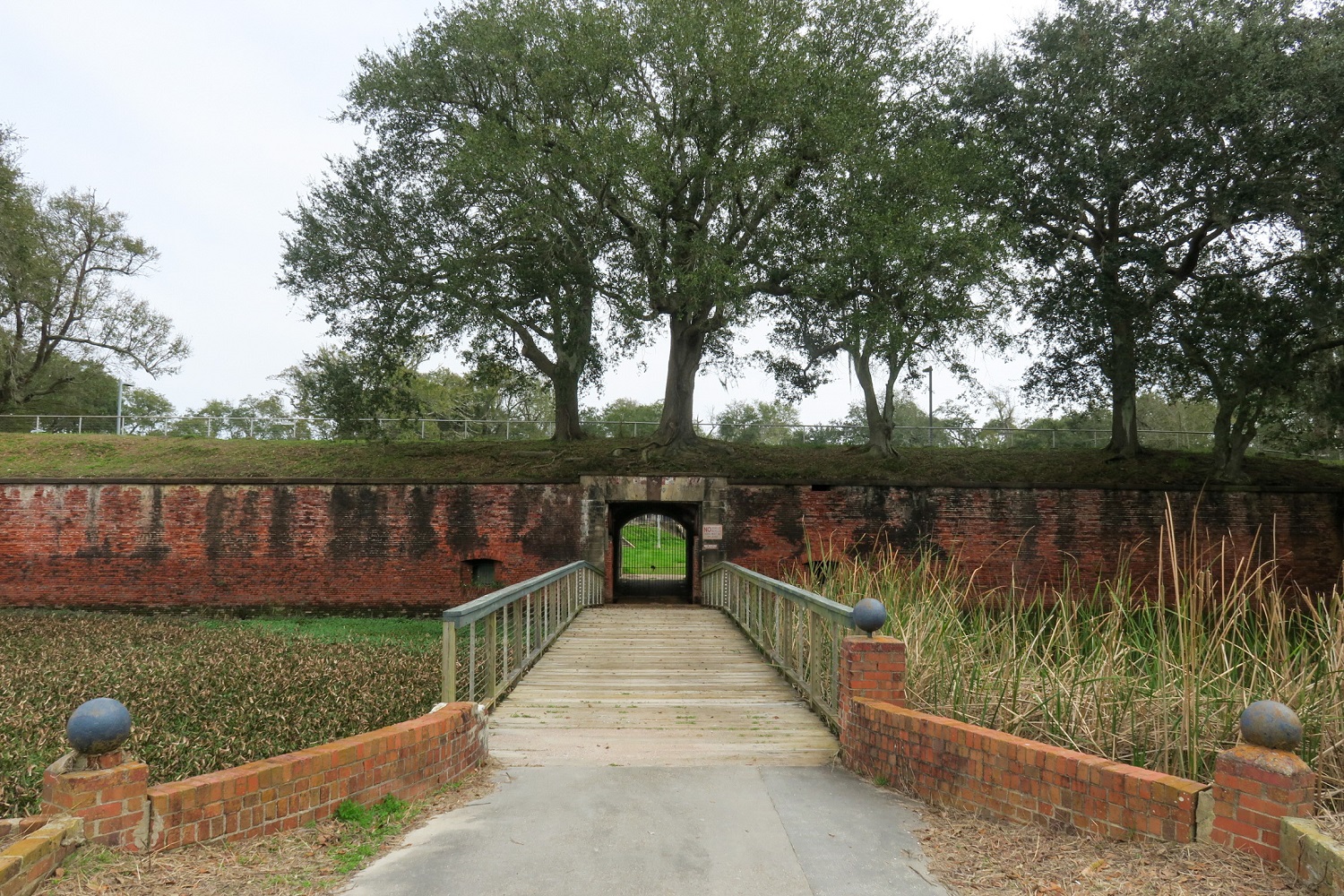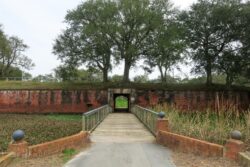Coastal
Jewels of Plaquemines Parish
Coastal challenges threaten Fort Jackson and the Orange Festival
Published: November 30, 2020
Last Updated: February 28, 2021

Photo by Morgan Randall
It’s a shame, too. Judge Leander Perez, a local (and notorious) political boss during the Huey Long era, once deemed Fort Jackson “the jewel of Plaquemines Parish,” and there’s no doubt as to why. Aside from playing an important role in the capture of New Orleans during the Civil War, Fort Jackson is a beautiful red-brick structure circled by a verdant moat. The complex is nestled between the Mississippi River, stately oaks, and Highway 23, with grassy levees surrounding it on three sides and egrets standing guard from atop its star-shaped walls. For the occasional tourist who makes the trip down from New Orleans, a walk around the outside is a tranquil reward after a seventy-mile drive.
To Plaquemines Parish locals, Fort Jackson is more than a serene picnic area or historic landmark. For decades, people have descended upon the grounds for the Plaquemines Parish Fair and Orange Festival, and more recently, for the Buras Volunteer Fire Department Crawfish Boil-Off. Madere claims both events at one time drew ten to fifteen thousand visitors. Considering the parish only has about twenty-three thousand residents, it’s an impressive turnout. It’s also a testament to the fort’s importance in the community.
Unfortunately, if the padlocks and levees weren’t enough of an indication, it might not stay that way for long. Subsidence, rising sea levels, and stronger storms all threaten the tiny sliver of land that the fort, and in fact much of the parish, sits on.
Knowing this, the parish government has been urging the National Park Service to absorb Fort Jackson since the late 1980s, hoping that the agency’s budget and resources could better protect the landmark. But the road to NPS absorption has been slow and halting, since it would take what Madere describes as literally “an act of Congress.” Until that happens, he and his wife Alora plan to establish a 501(c)(3) called the Friends of Fort Jackson, which they’ll use to raise funds for any maintenance and repairs the parish can’t afford. Between that and barrier islands being built by the Coastal Protection and Restoration Authority, there’s hope yet for Fort Jackson.
The same might not be said of the Orange Festival.
“The citrus product out of here is hardly anything anymore,” said Madere, “and that’s a shame because that orange festival was a huge festival. It’s dwindled because the growers have dwindled.”
Plaquemines was once home to thousands of citrus groves, but a combination of freezes and hurricanes throughout the twentieth century crippled the industry. Whatever remained, Katrina all but wiped out. Only a fraction of growers remain.
Ironically, the levees that protect Fort Jackson may have contributed to the disappearance of the parish’s citrus groves. Fertile silt and soil that once fanned out into the groves during floods are now funneled by levees into the Gulf of Mexico. The Coastal Protection and Restoration Authority reclaims some of that through dredging, but it goes toward rebuilding the coastline, not the citrus industry. Understandably so. Even if it did, most growers have moved on.
“I’m afraid in the next ten to fifteen years we might not have an Orange Festival,” said Madere.
Talking with Madere makes at least one thing clear: As long as there are people in Plaquemines, they’ll look after Fort Jackson. The fabric of its festivals may change, but the historic landmark at the bottom of the Boot will likely keep attracting another tourist or two.
Anyone who visits should stop by the Fort Jackson Museum and Welcome Center, about a mile up the highway from the fort. The spacious, light-filled room is mostly filled with Civil War artifacts spared by Katrina, but the Orange Festival also has a display. There are pictures of queens from years past, jeweled oranges glittering in their crowns, the height of their hair betraying the decade. Next to the pictures are empty bottles of orange wine, each vinted around seventy years ago by a patriarch of a prominent family of growers. An old festival booklet reveals that his son reigned as the Orange King in 2002, even though the family had abandoned the citrus industry entirely by 1962.
Morgan Randall is a writer exploring the relationships between people, the environment, and business. You can find her at morandall.com.
 This article was made possible by the BHP-funded project, Coastal Impacts: An Integrated Approach for Community Adaptation, Understanding, and Planning, which will assist local communities to build intergenerational coastal literacy through community conversations around books, film, and exhibitions, fostering greater understanding of and support for coastal restoration projects.
This article was made possible by the BHP-funded project, Coastal Impacts: An Integrated Approach for Community Adaptation, Understanding, and Planning, which will assist local communities to build intergenerational coastal literacy through community conversations around books, film, and exhibitions, fostering greater understanding of and support for coastal restoration projects.
